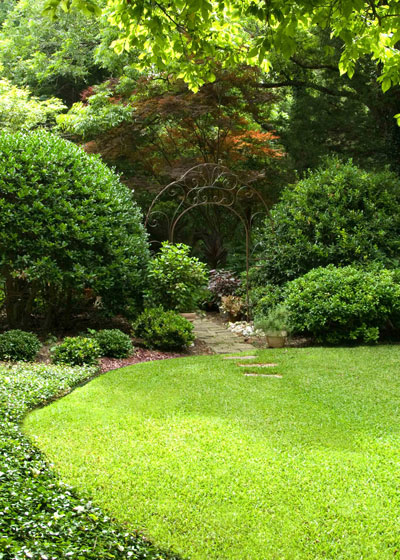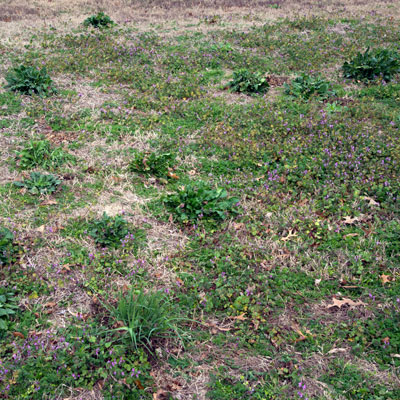Choosing the Best Fertilizer
It would be silly to tell you that any one company has the monopoly on really good fertilizers. I’m going to confine this discussion to general terms, and I’m going to limit it to plant foods you would use for lawns, landscapes and gardens.
I’ll begin with a rather bold statement. I’ll even put it in boldface font to drive the message home once and for all:
You may only need one type of fertilizer for all the plants that you’re growing!
That’s not a typo, and I’ve not lost my mind. Let me explain.

All of these plants and more will benefit from the same type of plant food.
Reports from the highly respected Soil Testing Laboratory at Texas A&M have shown for years that our soils contain excessive amounts of phosphorus. They warn that we should add no more. Too much phosphorus can have detrimental effects on the growth of our plants. That’s especially true for those of us who garden in heavy clay soils.
Phosphorus is the middle number of the 3-number analysis you’ll see printed on the bag or bottle of any product sold as a fertilizer. And so the tests show that you probably don’t want to add any more of that one.
The third number represents potash, or potassium. It’s a component of many of our native Texas soils already, so most of us won’t need to be adding it, either. However, if it’s in a plant food that you’re buying, no big deal one way or the other.
Where the big deal does come in is with the first number – nitrogen. It’s what plants use to grow more stems and leaves, and nitrogen is dissolved in rains and irrigation. Our soils are almost always lacking in adequate nitrogen. Most plants produce their flowers, and therefore their fruit, on new growth, and so even those depend indirectly on an ample supply of nitrogen.
Put it all together, and you’re looking for a fertilizer that has almost entirely nitrogen, no phosphorus, and little, if any, potassium. (That is, unless a reliable soil test shows something to the contrary.)
But Wait! There’s more!
So far that ought to be fairly easy to understand. But there’s one more little fact. Nitrogen comes in both fast-release and slow-release forms. You want some of each. You want the fast-release nitrogen for a quick green-up and new growth. Nobody wants to put out a plant food and see nothing happen. However, you also want sustained feeding over a period of many weeks.
And now – just now – we’re into the heartland of what makes up “the best fertilizer”. Slow-release (“coated” or “encapsulated”) fertilizer costs more to produce, so it’s obviously going to cost more to sell. But it’s going to give more sustained feeding, and it’s also going to be far less likely to result in accumulations of thatch.

Rather than using a “weed-and-feed” product on this unsightly lawn, it would be safer to mow the lawn closely (scalp) to eliminate as many weeds as possible, wait a week or two, then fertilize and a few days later use a broadleafed weedkiller spray carefully applied to the broadleafed weeds only. That’s my opinion after seeing hundreds of trees damaged by careless applications of weed-and-feed products.
The best fertilizers, in summary…
• There will be many fine brands, not just one that’s better than all the rest.
• The best ones will have all or primarily nitrogen.
• Quality is not dependent on price, but “cheap” fertilizers are rarely good fertilizers.
• A significant part of that nitrogen will be in slow-release form.
• They will have clear application instructions.
• (In my opinion) They will not have a weed killer included. (Due to risk of damaging desirable trees, shrubs while you’re feeding the turf.)
• They can be used for all of your lawn, landscape, flower and vegetable feedings simultaneously. (Because they do not contain weedkillers.)
